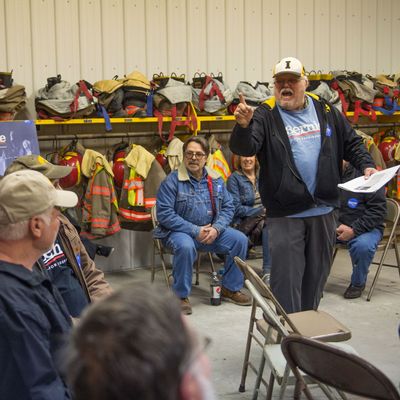
In an effort to explain major variances in polls leading up to the February 3 Iowa caucuses, the New York Times’ house contrarian Nate Cohn argues that the universe of likely caucusgoers skews much younger than some surveys indicate:
Caucus electorates appear to be fairly young, and primary electorates fairly or even very old. This shouldn’t be a huge surprise. The kinds of Democrats who have excelled in caucuses in recent years, like Mr. Sanders and Barack Obama, were backed overwhelmingly by younger voters. The young represented a large share of the caucus electorates in the 2004, 2008 and 2016 entrance polls — the only publicly available data on the composition of the caucus electorate, even if it’s of uncertain quality.
Cohn is arguing that some polls showing Joe Biden leading Sanders in Iowa are based on a profile of caucusgoers’ past primary-voting behavior, thus substituting an older group of participants than is likely the case. To put it another way, while we’ve always known there are primary voters (in Iowa and elsewhere) who don’t go to the trouble of caucusing, there are also apparently registered voters — particularly young activist types — who don’t bother to vote in primaries but will show up on a cold night in January to spend hours caucusing for Bernie.
The number of these caucusers-but-not-voters isn’t entirely clear, as Cohn admits; data on caucus participation is shaky. But they do tend to show up in the Times-Siena polling:
Past caucusgoers back Mr. Sanders by four points, even as past primary voters support Mr. Biden. Voters who say they participated in the 2016 Democratic caucus, specifically, back Mr. Sanders by nine points; he’s at 25 percent and Pete Buttigieg at 16 percent. These 2016 caucusgoers say they voted for Hillary Clinton over Mr. Sanders, 49 percent to 46 percent, with 3 percent for Martin O’Malley — very close to the actual result, perhaps lending credibility to the overall Times/Siena finding.
I’m in no position to adjudicate the arguments Nate Cohn is having with other pollsters. But he’s right to remind us that voting and caucus participation are two different things entirely. In 2008, when I observed a very high-turnout precinct caucus in Des Moines, the initial “alignment” of attendees into candidate preference groups led to the Hillary Clinton group assembling uncomfortably outside the main room that had seats. A relatively high share of these HRC supporters were older women, and more than a few left before the second alignment that produced the final results. It’s one thing to show up, and another to stick around, particularly if you are in physical discomfort and it looks like your candidate isn’t doing that well.
The physical stamina of younger people is one factor that can give the candidate who attracts them an edge on the margins, as is the excitement often associated with highly ideological candidates. But effective caucus performance is also attributable to a given candidate’s organization, which can help identify the most likely caucusgoers, make sure they know where and when to show up, and train them on what to expect and how to react after the first head count is taken. So it’s not necessarily just a matter of appealing to people who will spontaneously show up and stay because they are that sort of people. And it’s odd that Cohn’s whole disquisition on turnout doesn’t mention organization and also doesn’t mention the candidate generally thought to have the best one in Iowa, Elizabeth Warren.
Perhaps after February 3 we’ll have a better understanding of the identity of likely and actual caucusgoers and which pollsters, using varying methodologies, best captured their nature and candidate affiliations. But the Iowa caucuses are contests where, unlike primaries, you generally cannot explain the results without paying attention to the campaigns involved.






























